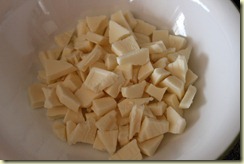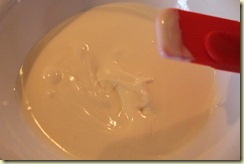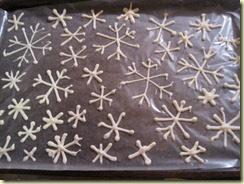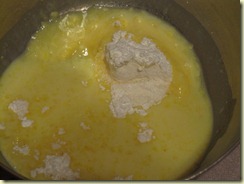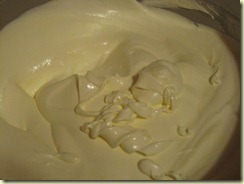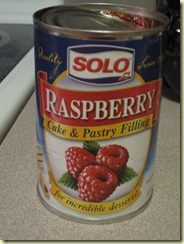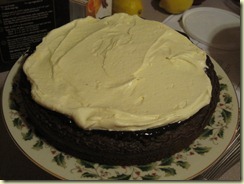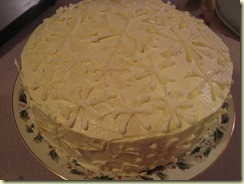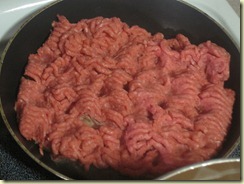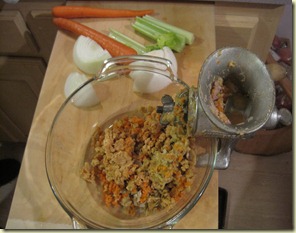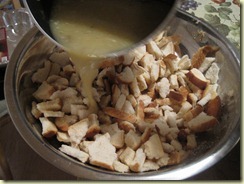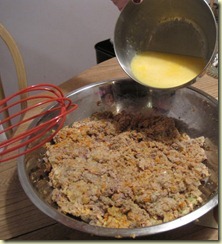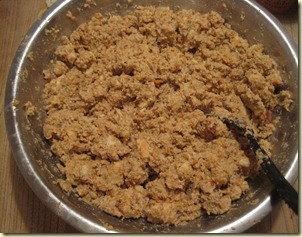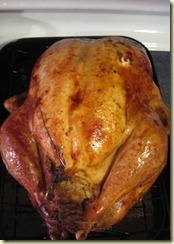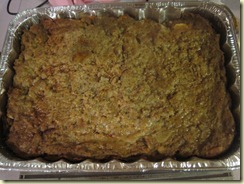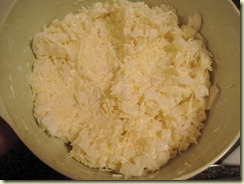Creamy Cauliflower Soup
What You’ll Need
- 2 medium white or yellow onions, diced
- 4 cups low-sodium vegetable broth
- 2 medium Russet potatoes, peeled and cubed
- 2 stalks celery, diced
- 2 medium carrots, peeled and diced
- 1 small head cauliflower, roughly chopped into bite-size florets
- 1 tbsp cashew butter (Note: I used reduced fat PB)
- 2 tbsp low-sodium tamari (Note: I used LS soy sauce)
- 1 tbsp Salt-Free Spike seasoning (or to taste)
- Sea salt/black pepper to taste
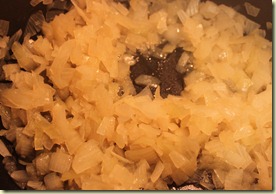
After the onions are translucent and soft to the touch (with a fork, not your fingers!), add the chopped potatoes, celery, carrots, cauliflower, and the remaining vegetable broth. Make sure to use a sufficiently large pot, so that you don’t replicate the space issue I always seem to have.

I bought a cauliflower head that was definitely more jumbo-sized than small, since my grocery store charges by the head and I have an intrinsic need to get the most possible for my money (see: cheapness). This resulted in a giant freaking heap of vegetables in my pot that I was more than a little concerned wouldn’t cook down. Being the stalwart chef that I am, I decided to stick it out and keep them as they were (aka, I didn’t feel like dirtying, then washing, another pot). As I had
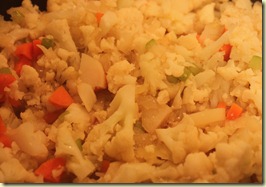
For the next step, you will need either a large food processor, a blender, or an immersion blender. Even though I now own all three appliances (yay Christmas presents!), I went with the suggestion of my chef instructor and broke out my brandy new immersion blender. This also allowed me to avoid cleaning yet another extra vessel, as you blend the soup right in the pot (seriously, it’s genius).
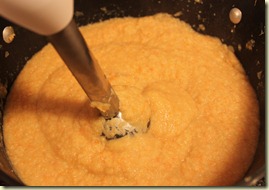
If the soup is too thick, feel free to add some water to help thin it out to the consistency you desire – I added approximately ½ cup of water at this stage. Add salt and pepper to taste, which for me was about ½ tsp of each.
My final addition, which is not in the additional recipe but which we used in class, was 1 tbsp of Salt Free Spike Seasoning.

For those of you who have never used Spike before (like me, prior to my class), the Spike line of seasonings contain approximately 92874 different spices in one magical bag. It’s really a combination of 39 herbs, spices, and vegetables, but as we all know, I like to exaggerate. This is my new favorite spice because it’s a) inexpensive, b) got great flavor, and c)is super convenient. According to this website,
The main ingredients for the Spike seasoning include hydrolyzed protein from vegetables, various powders (like onion, orange, celery leaf and celery root, garlic, mushroom, parsley, spinach, tomato, etc), toasted onion, soy flour, dill, curry, white pepper, green and red peppers, tarragon, saffron, rosehips, sweet paprika, oregano, basil, marjoram, rosemary and thyme…I mean, really, who has all those different things in their spice cabinet at any one time?
After adding the salt, pepper, and Spike, blend thoroughly until completely smooth. If, like me, your carrots were massive, it may take an extra 1 or 2 minutes to remove any of the tiny orange chunks floating around.

Like most soups, I’d recommend serving this with crusty French or Italian bread, and a nice side salad. Although this soup is delicious, it may not be hearty enough for a full meal, although feel free to eat as much of it as you want – there’s no added fat, very few calories, and it’s chock full of veggies and nutrients. Overall, this creamy yet healthy starter was Whole Foods selected, hungry husband (and wife) approved.



